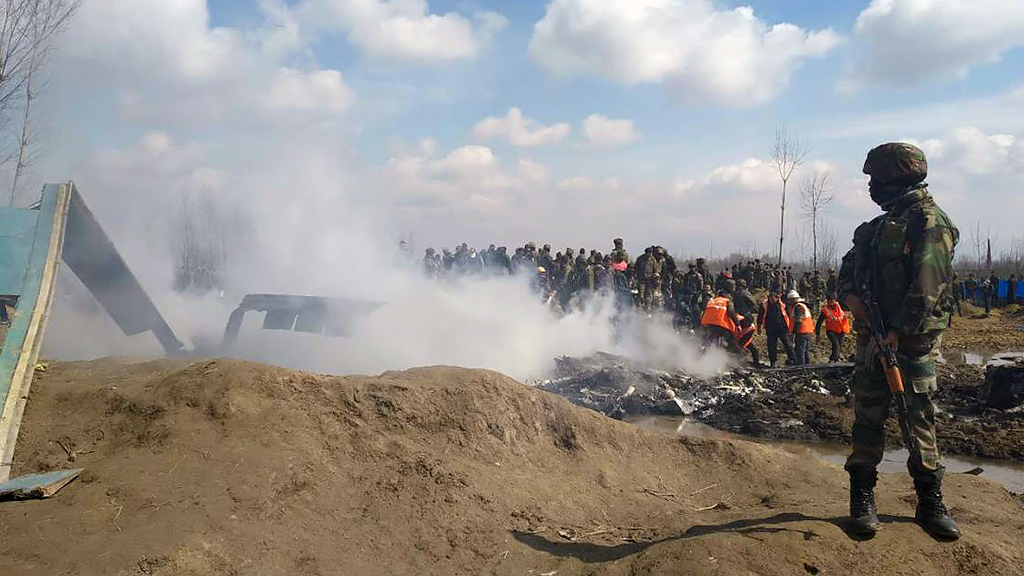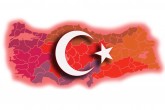The most recent regional crisis erupted in South Asia after the Indian Air Force crossed into Pakistani air space in order to hit Kashmiri armed groups. The story of the crisis goes back to the end of British colonialism in the subcontinent.
After the withdrawal of the British from South Asia in 1947, the subcontinent was politically divided into two new states, namely the Muslim-majority Pakistan and Hindu-majority India. Millions of people had to migrate from one side to the other. India and Pakistan divided the land without much problem. However, they could not agree on the status of Jammu and Kashmir, a region with a Muslim majority. Although each side claimed the control of the entire region, the region was divided into three parts. While 45 percent of the region is under the control of India, 35 percent of the region is controlled by Pakistan. China, another regional actor, controls the remaining 20 percent.
Therefore, the British left the status and the fate of Jammu and Kashmir to the people of the region. The U.N. Security Council adopted resolution 47 calling on India to conduct an impartial plebiscite. Unfortunately, the claim over the Jammu and Kashmir region turned into a crisis that caused several wars between the two states and has not been solved in the last seven decades.
The most recent crisis in the region started with a suicide bombing on Feb. 19, 2019, against the Indian paramilitary forces in Indian-controlled Kashmir, which resulted in the deaths of more than 40 paramilitary police officers. A Kashmiri organization, Jaish-e Mohammed (JeM), claimed responsibility for this attack, the biggest attack against India since 1989.
JeM, which is an organization established in 1999 by the Pakistani religious scholar Masood Azhar, who had close relations with the Afghan Taliban, defends the unification of Kashmir with Pakistan. The group, which is recognized as a terrorist organization by the U.N., the U.S., the U.K. and India, declared that they would continue to attack India in order to save Muslims living under its control.
The newly elected Pakistani Prime Minister Imran Khan said the Indian claims of hitting terrorist camps were unfounded and inconsistent. Khan claimed that the attacks were directly related to the future Indian elections to be held in two months. He argued that this move is a threat to regional peace and stability. The following day the Pakistani Air Force shot down two Indian warplanes and captured one of the pilots.
Authorities from both sides have stated that they do not want to increase tensions and go to war, even though some leading members of the Pakistani National Chief of Staff declared that if the crisis escalates to a level threatening national security, they will not hesitate to use nuclear weapons. Pakistanis have tried to deter a possible war with India. On the other hand, the Pakistani prime minister has explained that they are open to any discussion regarding the Kashmir crisis. Pakistan also released the captured Indian pilot as a gesture of goodwill.
At the global level, the crisis is a rivalry between global powers, namely the U.S., China and Russia. These powers have been exploiting the Kashmiri crisis. While China has been supporting Pakistan against India, the U.S. has been in close relations with India. On the other hand, Russia has gotten involved by selling air defense systems, specifically the S-400, to India. Increased tension and rivalry between global powers will make the situation in the region even more difficult.
[Daily Sabah, 6 March 2019]
In this article
- Opinion
- Afghanistan
- Britain
- CENTCOM
- China
- DAESH
- Daily Sabah
- Donald Trump
- East of the Euphrates
- Elections
- Fight against DAESH
- Global Actors | Local Actors
- Global Power
- Imran Khan
- India
- Jammu and Kashmir
- Jammu and Kashmir Conflict
- Kashmir
- Kurdistan Workers' Party Terrorist Organization (PKK)
- Middle East
- NATO
- NATO Ally
- Nuclear weapon
- Operation Euphrates Shield
- Pakistan
- Peace Corridor
- People's Protection Units (YPG)
- PKK - YPG - SDF - PYD - YPJ - SDG - HBDH - HPG - KCK - PJAK - TAK - YBŞ
- Prime Minister
- Russia
- S-400 Triumph Air Defence Missile System
- Safe Zone
- Syria
- Syrian Civil War
- Syrian Conflict
- Syrian Crisis
- Syrian Democratic Forces (SDF)
- Syrian National Army (SNA)
- Syrian National Coalition
- Syrian Opposition
- Syrian Refugees
- Taliban
- Terrorism
- Trump’s Syria Withdrawal
- Turkish Foreign Policy
- Turkish-American Relations
- Türkiye-US Relations
- Türkiye-US Security Relations
- Türkiye's Foreign Policy
- Türkiye's Operation Peace Spring
- Türkiye’s Operation Olive Branch
- U.N.
- UK
- United Kingdom (UK)
- United Nations (UN)
- United Nations Security Council (UNSC)
- United States (US)
- US Withdrawal from Syria
- US-PKK/PYD/YPG/SDF Relations
- US-Terror Relations
- Vladimir Putin



